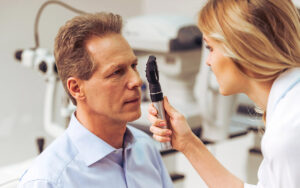Dry eye syndrome is a pervasive condition that can significantly affect your quality of life, causing discomfort and often impairing vision. It occurs when your eyes do not produce enough tears or when the tears evaporate too quickly. This can lead to inflammation and damage to the surface of the eye. Recognizing the signs of dry eye is crucial for managing the condition effectively. In this comprehensive guide, we’ll explore the five most common symptoms of dry eye, how to diagnose them, and what treatment options are available.
Dry eye is a condition that affects millions worldwide and is often characterized by irritation and discomfort. It can result from various factors, including age, environmental conditions, or certain medical or eye conditions. Understanding the symptoms is essential to seeking timely treatment and preventing further complications. Here we break down the five signs to watch for if you suspect you might be suffering from dry eye.
Persistent Dryness
One of the most obvious signs of dry eye is a persistent feeling of dryness in the eyes. This isn’t just occasional dryness that might occur in certain environments or situations—people with dry eye syndrome experience this constantly, and it often gets worse throughout the day.
Irritation and Grittiness
Another common symptom is the sensation of having something gritty in your eyes, or general eye irritation. This can feel like sand or dirt is trapped under your eyelids. It is not only uncomfortable but can lead to more rubbing, which exacerbates the problem.
Redness
Redness in the eyes is a common sign of dry eye. This symptom is due to inflammation and irritation on the surface of the eye. An eye doctor should always examine persistent eye redness because it may also be a sign of other eye conditions.
Blurred Vision
Dry eye can often lead to temporary blurred vision, which may improve with blinking. It can interfere with day-to-day activities like reading or driving, especially in severe cases. This occurs because dry spots on the cornea can scatter light entering the eye.
Watery Eyes
Ironically, another symptom of dry eye is watery eyes. This is the body’s response to the irritation of dry eyes. The eyes try to compensate for the dryness by overproducing tears, leading to excessive watering. These tears, however, are often poor in quality and do not help alleviate dry eye symptoms effectively.
Frequently Asked Questions
Can dry eye syndrome cause permanent damage?
If left untreated, severe dry eye can lead to pain, ulcers, or scars on the cornea, and even some loss of vision. However, permanent damage is rare with proper treatment and management.
Are there specific tests to diagnose dry eye?
Yes, an eye doctor can conduct several tests, including measuring tear production, examining the quality of your tears, and looking at how quickly your tears evaporate.
What are the best treatments for dry eye?
Treatments range from over-the-counter artificial tears and warm compresses to prescription eye drops and procedures to block tear ducts to decrease tear loss. Lifestyle changes like using a humidifier and taking breaks during long tasks can also help.
Does diet affect dry eye?
Yes, studies suggest that a diet high in omega-3 fatty acids can help improve symptoms of dry eye.
Is dry eye more common as you age?
Yes, dry eye syndrome is more prevalent in older adults, particularly in post-menopausal women, due to hormonal changes affecting tear production.
Conclusion
Recognizing and understanding the symptoms of dry eye is the first step toward finding relief. If you’re experiencing any of these common signs—persistent dryness, irritation, redness, blurred vision, or watery eyes—it might be time to see an eye care professional. Managing dry eye is crucial not only for comfort but also for maintaining your overall eye health and vision quality.
For more information on eye health and to read further articles on managing common eye conditions, check out our blog. And if you suspect you have symptoms of dry eye, don’t wait for them to worsen—make an appointment today to get the relief you need and keep your eyes healthy.




